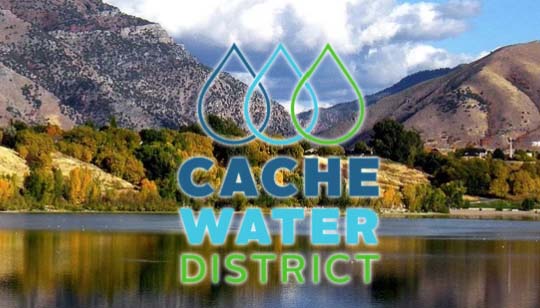CACHE COUNTY – An analysis of the economic benefits of water in the Bear River basin is underway and Nathan Daugs, the manager of the Cache Water District, needs to figure out how to pay for it.
“You may have noticed that the Great Salt Lake is now the center of Utah’s water policy,” Daugs told members of the Cache County Council at their regular meeting on April 25.
Due to drought conditions, the water of the Great Salt Lake has fallen to precarious levels in recent years. In 2022, the Utah Legislature approved nearly half a billion dollars to preserve the lake. During their 2023 general session, lawmakers chipped in another $427 million for Great Salt Lake improvements.
“That’s something that we all need to work together and focus on to help solve,” Daugs acknowledged.
“What’s not being discussed, however, is all the river basins that contribute to Great Salt Lake.”
The biggest contributor to the Great Salt Lake is northern Utah’s own Bear River basin, which drains the Bear River, the Little Bear River and the Logan River.
Thanks to a 2012 economic analysis of the financial impact of the Great Salt Lake, lawmakers have their eyes on the $1.5 billion that the lake contributes annually to the state economy, mainly from its associated minerals industry.
“If we don’t have water in the Great Salt Lake, the minerals industry can’t exist. So we need water in the lake,” he agreed. “But nobody’s looking at the bigger picture of how (prioritizing water for the Great Salt Lake) is going to effect everybody upstream.”
Beginning in the Uinta Mountains, the Bear River crosses the states of Utah, Wyoming and Idaho before flowing into Great Salt Lake.
Early in the 20th century, the river was regulated for hydropower by controlling the flow of Bear River water into and out of Bear Lake by PacifiCorp. That is considered one of the first multiple-use reclamation projects not financed by the federal government.
For more than 110 years, Bear River has provided a stable water supply for over 150,000 acres of irrigated farmland downstream of Bear Lake; extensive high-runoff management benefits; generation of the aforementioned hydroelectric power; recreational opportunities at Bear Lake and along the course of the river; and, habitat enhancements for fish and wildlife.
To negotiate effectively at state level, Daugs explained, the Cache Water District needed a similar economic analysis of the beneficial impacts of water in Bear River basin.
Daugs said that a partnership of concerned groups commissioned that study to be completed by November in time for the 2024 general session of the Legislature.
After some negotiation, the price for that study is $179,000.
According to Daugs, the partners in that endeavor are the Cache Water District, state Division of Water Resources, the Great Salt Lake Advisory Council, three soil conservation districts and the Box Elder County commissioners.
He added that the Cache Water District has already contributed $25,000 for the study, along with another $50,000 from the state of Utah.
Daugs said that another $25,000 contribution to the Bear River Basin study by the Cache County Council would be helpful.
After a few minutes of questions and answers with Daugs, the County Council members continued with their scheduled agenda without further comment.

